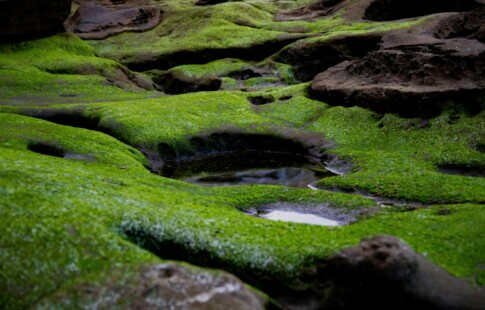
Shinrin-Yoku: The Art of Japanese Forest Bathing
We are reader-supported. When you buy through links on our site, we may earn affiliate commission.
Spreading the importance of being in nature is multipurpose — it helps humans connect to the natural world, which leads to a more profound sense of urgency to protect it. Japanese forest bathing is a practice that refreshes the physical body and reinvigorates minds.
This forces us to bond with the natural environment in a hyperconnected and digital age. So many of us spend hours a day on social media when it wasn’t long ago people spent most of their time outdoors. Forest bathing reminds us what it was like to slow down and appreciate how nature makes us feel.
Let’s explore what Japanese forest bathing is and how you can practice it, even in a climate forcing you to stay constantly connected.
What is Japanese Forest Bathing?
The Japanese Ministry of Agriculture, Forestry, and Fisheries took the initiative in the 1980s to remind citizens of the importance of going outside. Over time, global urbanization has reduced time in nature and increased time spent indoors or surrounded by skyscrapers.
As technology advanced rapidly — Japan being the most technologically advanced and innovative country in the world — spending time in nature quickly became a forgotten pastime. This was when the Ministry created the term shinrin-yoku, or forest bathing. It roughly translates to “absorbing the forest atmosphere.”
This translation insinuates a spiritual and literal absorption of nature. The airborne chemicals plants give off called phytoncides protect plants from predatory insects and disease. These chemicals also help humans by increasing white blood cell counts, providing the benefits that keep forest bathers returning.
The Ministry’s mission was to inspire citizens to use their senses to connect with natural settings. Forest bathing was an alternative to technology and screens to ground individuals in the present moment. Though this concept precedes the 1980s, it’s easy to see how it is still relevant not only to Japanese culture but also to the hustling, overworked, screen-addicted global trends of the modern generation.
Japanese forest bathing doesn’t require athletic intensity or actual bathing. Though you must spend time in nature, this is not synonymous with strenuous hiking or walking for three hours until you are completely lost in a sea of trees. There are countless locales for practicing forest bathing, both near and far, and each provides unique benefits depending on what’s native to the setting.
Where Can You Go to Practice Shinrin-Yoku?
Some refer to forest bathing as a form of ecotherapy, with the only requirement of shinrin-yoku is to practice mindfulness in any natural setting. This includes:
- Local parks
- Beaches and waterfronts
- Natural parks
- Wooded areas in your backyard
This method is not defined by complex rules so as not to restrict any person from engaging in the activity. However, comfort should be a priority so you can focus on nature without distractions.
Practice safety and self-care as you would going outside for any other occasion. This includes applying environmentally friendly sunscreens and bug sprays and respecting the environment to preserve it the best you can. Bring loved ones with you for the experience to share in nature’s beauty and for additional safety if you choose a more adventurous location. Adequate preparation will enrich your experience, allowing you to immerse more fully.
However, remind yourself the primary goal isn’t to socialize. Compared to a standard hike or park walk, you may be distracted by walking your pet or chatting with acquaintances. Forest bathing is more intentional, redirecting your senses that would otherwise be preoccupied back to nature.
Like meditation, it is natural for the mind to wander in forest bathing. Still, as long as you intend to attach as many senses to the natural surroundings as possible, you will obtain the many advantages of forest bathing.
Suppose you would rather join a more formal forest bathing experience than be self-guided. In that case, non-profits, associations, and passionate forest bathers worldwide lead countless community-led experiences.
The Association of Nature and Forest Therapy offers training and resources for interested individuals. There are also meetups on websites like Facebook and Meetup to interact with people in your community — and to hold you accountable for your forest bathing habit. National parks are also offering shinrin-yoku opportunities for tourists.
Are There Proven Benefits of Forest Bathing?
People who practice shinrin-yoku see improvements in mental and physical health while developing a deeper appreciation of nature. Though it isn’t required, consistent forest bathing will provide the most discernible benefits. This is from extended exposure to varied natural stimuli. You don’t have to stay still, so you can practice forest bathing by:
- Listening intently to nature sounds like singing birds and rustling leaves
- Deeply breathing nature smells like crisp autumn air or blooming flowers
- Laying in grass, leaves, or dirt to feel the textures
- Watching animals and insects traverse their natural habitats
Doctors recommend forest bathing for preventative health for a reason. Those prioritizing forest bathing understand the necessity of relaxation and technological detachment because they feel the differences.
This practice will minimize codependence on technological stressors and potential addictions like engaging with negative Facebook comments while doomscrolling. This decreases blood pressure, muscle tension, and chances of hypertension because the body is practicing intentional calming techniques.
It can also benefit the body by:
- Improving sleep
- Increasing cells that fight disease, improving immunity
- Regulating mood
- Lowering cortisol to reduce stress, irregular breathing, and heart rate
- Relieving symptoms of anxiety and depression
Forest bathing would benefit humans, regardless of age, location, or position in life. Children could help by giving them avenues to practice focused attention, and adults could bask in a few moments of purposeful peace away from the stressors of over-demanding work life.
Japanese Forest Bathing Prompts Time in Nature
For those intimidated by other mindfulness practices, such as Zen meditation, take a moment to plan your first forest bathing excursion. Combine it with another mindfulness practice, such as journaling or meditation, to see how nature can positively impact your life in other ways. Your physical and mental health will improve alongside an increased awareness of why the environment is vital to protect.
Share on
Like what you read? Join other Environment.co readers!
Get the latest updates on our planet by subscribing to the Environment.co newsletter!
About the author

Steve Russell
Steve is the Managing Editor of Environment.co and regularly contributes articles related to wildlife, biodiversity, and recycling. His passions include wildlife photography and bird watching.





